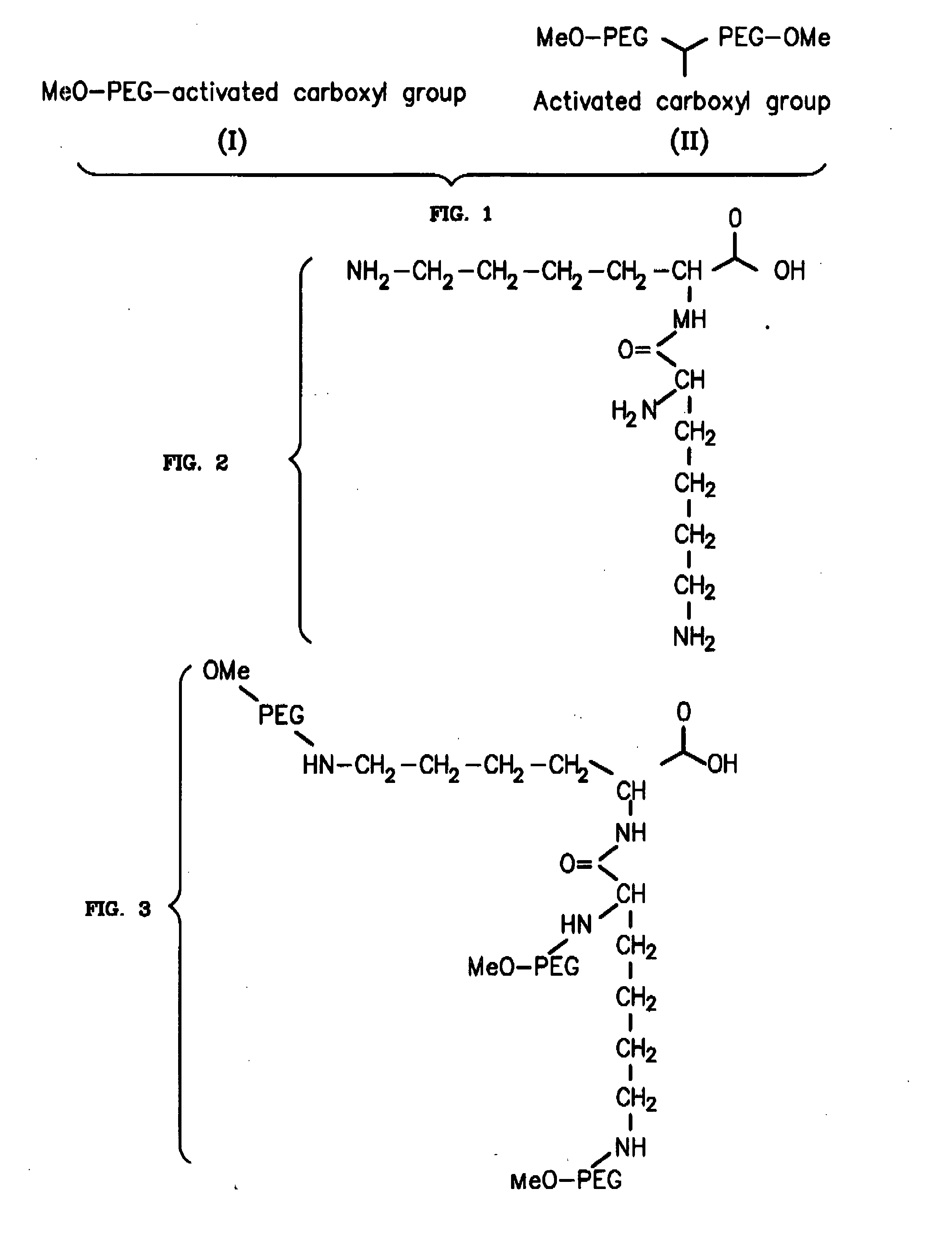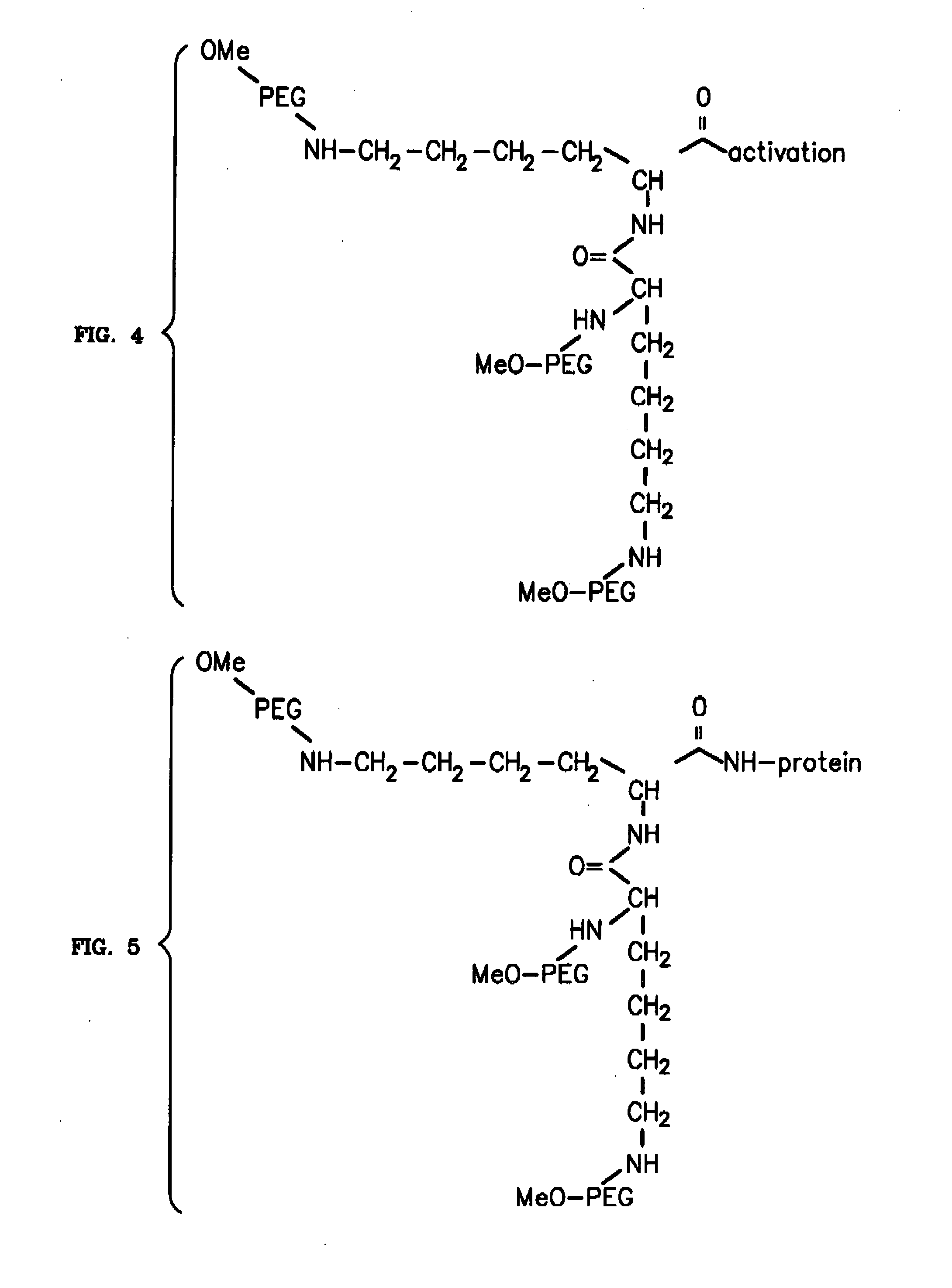Novel PEGylation agent
a pegylation agent and pegylation technology, applied in the field of pegs and proteins or peptides, can solve the problems of immunogenic response, reduced compliance of patients for their needed treatments, and proteolytic enzymes can degrade very quickly, so as to reduce patient compliance, increase plasma half-lives, and degrade very quickly
- Summary
- Abstract
- Description
- Claims
- Application Information
AI Technical Summary
Benefits of technology
Problems solved by technology
Method used
Image
Examples
Embodiment Construction
[0022] Definitions
[0023] As used herein, the term “tissue site” includes any tissues in an organism. A tissue site is typically surrounded by an aqueous or body fluid such as interstitial fluid, blood, serum, cerebrospinal fluid or peritoneal fluid.
[0024] The term “tissue defect” is a subset of “tissue site” and includes tissues, such as abraded tissue, traumatized tissue, a surgical incision or surgically resected tissue. Examples of tissue defects include, but are not limited to, surgical incisions in an internal organ such as an ovary, heart, liver, intestine, stomach, etc., wounds from injuries, surgical interventions, etc.
[0025] The term “biodegradable” means that the PEG / therapeutic agent composite will degrade over time by the action of enzymes, by hydrolytic action and / or by other similar mechanisms in the human body.
[0026] The term “bioabsorbable,” means that the PEG / therapeutic agent will be broken down and absorbed within the human body, for example, by a cell or tiss...
PUM
| Property | Measurement | Unit |
|---|---|---|
| pH | aaaaa | aaaaa |
| bioactive | aaaaa | aaaaa |
| polymeric | aaaaa | aaaaa |
Abstract
Description
Claims
Application Information
 Login to View More
Login to View More - R&D
- Intellectual Property
- Life Sciences
- Materials
- Tech Scout
- Unparalleled Data Quality
- Higher Quality Content
- 60% Fewer Hallucinations
Browse by: Latest US Patents, China's latest patents, Technical Efficacy Thesaurus, Application Domain, Technology Topic, Popular Technical Reports.
© 2025 PatSnap. All rights reserved.Legal|Privacy policy|Modern Slavery Act Transparency Statement|Sitemap|About US| Contact US: help@patsnap.com


